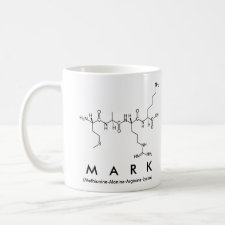
Authors: Ali M, Vaughan AD, Zhang J, Venkatesh S, Byrne ME
Publication date: 2009
Article title: Templated hydrogels for combination devices: therapeutic contact lenses.
Page numbers: 242-245
DOI: 10.1109/IEMBS.2009.5332862
Publisher: IEEE
Volume number: 2009
Conference information: Proceedings of the Annual International Conference of the IEEE Engineering in Medicine and Biology Society.IEEE Engineering in Medicine and Biology Society.Conference
Abstract: Molecular imprinting provides a rational design strategy for the development of controlled release drug delivery systems. We demonstrate that imprinting a network results in macromolecular memory for the template molecule, indicated by the two or more times greater partitioning into these networks as compared to non-imprinted networks. Partitioning of drug into networks synthesized from multiple functional monomers was 8 times greater than networks synthesized from single monomers. One-dimensional permeation studies showed that the gel with maximum incorporated chemical functionality had the lowest diffusion coefficient, which was at least an order of magnitude lower than all other gels studied. All imprinted networks had significantly lower diffusion coefficients than non-imprinted networks, in spite of comparable mesh sizes and equilibrium polymer volume fractions in the swollen state. This work also demonstrates molecular imprinting using a "living/controlled" polymerization strategy to enhance template loading/affinity and delay release in weakly crosslinked gels. Recognition studies revealed more than a 50% increase in template loading and dynamic template release studies showed that imprinting via "living" polymerization extends or delays the template release profile by two-fold over that of imprinting via conventional free-radical polymerization techniques and four-fold over the control network. The imprinted gel and imprinted gel prepared via "living/controlled" polymerization release profiles were less Fickian and moved toward zero-order release with profile coefficients of 0.68 and 0.70, respectively
Template and target information: ketitofen, diclofenac sodium



Join the Society for Molecular Imprinting

New items RSS feed
Sign-up for e-mail updates:
Choose between receiving an occasional newsletter or more frequent e-mail alerts.
Click here to go to the sign-up page.
Is your name elemental or peptidic? Enter your name and find out by clicking either of the buttons below!
Other products you may like:
 MIPdatabase
MIPdatabase









